Basics of Dog Training
It’s essential for dog parents like you to know certain basic factors that determine your relationship with your dog and can go a long way in training him effectively.
Before you begin training your dog, it is absolutely essential that you build a loving bond with him. This is important as it helps you to understand his needs and instincts and also allows your dog to have complete trust in you.
==>==> Know more about Dog care from this free mini course <==<==
Let us see how!
How To Bond With Your Dog
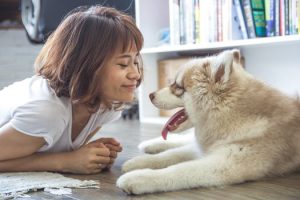 Building a bond with your dog is the first and the most crucial step involved in training him successfully. As soon as you bring your dog home, you must first try to develop a caring and loving relationship with him in order to win his trust and confidence.
Building a bond with your dog is the first and the most crucial step involved in training him successfully. As soon as you bring your dog home, you must first try to develop a caring and loving relationship with him in order to win his trust and confidence.
When dogs are secure in the knowledge that they belong to the family, they are more likely to respond better to their owners’ training commands. Just like with any relationship, there must be mutual trust and respect between you and your dog.
Trust takes time to develop and respect comes from defining boundaries and treating any breach of those boundaries with firmness and fairness.
Without enforceable limitations, respect can’t be developed. And when there is no respect, building a bond with your dog is almost impossible.
4 Golden Rules To Building A Relationship With Your Dog :
- Spend quality time together;

- Take him out in the world and experience life together;
- Establish and promote a level of mutual respect; and
- Develop a way of communicating to understand each other’s needs.
Building a bond with your dog will not only help you manage him better but ill also make your dog calm, quiet and an extremely well-adjusted pet.
Love Your Dog and He Will Love You back
Once you’re succesful in building a bond with your dog, you can rest assured that training him and teaching him new and clever tricks will be a cakewalk.
==>==> Learn how to bond with your Dog with this free mini course <==<==
How Your Dog Learns
Your dog’s learning period can be divided into five phases:
The Teaching Phase – This is the phase where you must physically demonstrate to your dog exactly what you want him to do.
The Practicing Phase – Practice makes Perfect. Once a lesson is learnt, practice with your dog what you have just taught him.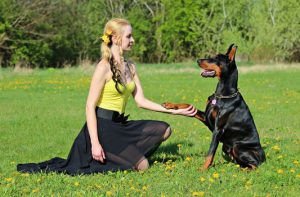
The Generalizing Phase – Here you must continue practicing with your dog in different locations and in an environment with a few distractions. You can take your dog out for a walk, or to a nearby park and command him to practice whatever you’ve taught him.
Practicing the learned lessons in multiple locations and in the presence of small distractions will help him learn and retain lessons better .
The Testing Phase – Once you’re sure that your dog has achieved almost 90% success….he responds correctly almost every time you give a command, you must start testing his accuracy in newer locations with a lot of distractions.
Example: Take him to the local shopping mall and ask him to obey your command. He may not come up with the correct response the very first time you do this, but you must not lose hope.
The idea is to test your dog to see how he responds in an environment which is new to him. Set up a situation where you are in control of the environment and your dog.
There are only 2 possibilities: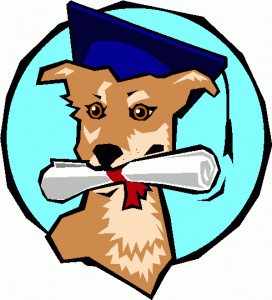
- Your dog succeeds!!! (Trumpets please!)
- In case your dog fails, re-examine the situation. Review and/or change your training. Then try testing again.
Keep on testing until he succeeds. Follow the rule of the 3 Ps – patience, persistence, praise.
Internalizing Phase – Finally, comes the extremely rewarding phase where your dog does everything he is taught to do even without your commands.
Remember:
- Never scold your dog if he fails. It’s not his fault. You have failed as a trainer!
- You must be patient and persistent for your efforts to show rewards.
- Appreciate and love your dog when he does it right! A little encouragement will work wonders for your dog.
- Dog Training is easy when you do it right.
==>==> Learn how to train your Dog better with this free mini course. <==<==
Copyright (c) 2009 TrainPetDog.com
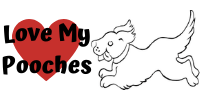
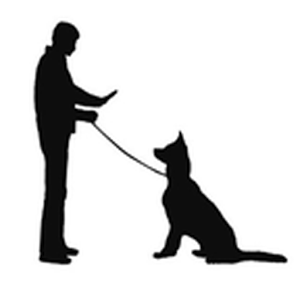

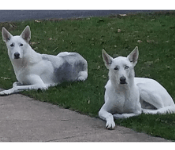




Thanks for this advice! My wife and I haven’t gotten a dog yet. We’re afraid it will upset our two little cats too much. But I will need to bookmark this advice for later!
Do different breeds react to training in different ways, or is this pretty consistent in any dog training?
I was also wondering if early separation from a mother can make training harder. My experience with one of my cats suggested that the way we separated the kitten from its mom so young was deleterious to the cat’s behavior. I expect young ones to always be jumpy or a little rough, but this one was extreme.
Do puppies need training from their mother first?
We have 3 cats and 2 large dogs, and they live very well together. In fact our 17 year old cat pretty much rules the roost at our house. If she doesn’t want to be disturbed, a quick hiss from her will quickly send both dogs out of her way, lol. So your cats may adjust better than you think.
My personal experience with training our dogs is that the breed didn’t matter so much, but the personality of each dog made a difference in how they learned. For instance, our female, Sasha, didn’t respond well to any training that involved giving treats, but she loved it when you played with her using her toys. So whenever she did what was asked, we’d throw the ball for her as a reward, and it worked well. Our male, Tahlen, is the opposite, and he will do anything for a treat!
For questions on specific breeds and separation problems, I’d definitely look into TrainPetDog.com. They are a great resource for training and other behavior issues. Thank you for stopping by!
These are some good tips you have. My neighbor just bought a puppy, but they are very ‘green’ owner, meaning that they know nothing about caring for dogs. The reason they are getting it is for the kids.
I’ll make sure to share this article with them so that they get some ideas on how to raise a well behaved dog. Thanks!
So glad you found the tips helpful! TrainPetDog.com has some wonderful training on many aspects of caring for a dog, so I hope they find it useful for their new puppy.
I have an amazing American Pit. I could call him a rescue, but he actually rescued me! The only problem I have with him is the noise… When other people or animals get within a certain proximity of me or my children, he makes it well known that he is there. I understand that this is his way of letting people around us know that “we are his people” but it terrifies everyone! He is really only talking and he is a gentle soul and has never initiated a fight or viciously approached anyone, human or animal, but how do I get him out of this habit so he stops scaring the neighbors!?
I can relate to what you’re talking about. My daughter has an American Bullie, and he’s one of the sweetest, most affectionate dogs I’ve ever known. But if he doesn’t know someone, he gets scared and his first instinct is to bark, making him look very scary!
I definitely recommend TrainPetDog.com. They have great tips on how to bond with and train your dog, and could really help. Good luck!
Hi Janelle, thanks for this article! I researched a lot last year about training dogs (Dog Training Revolution was a YouTube channel I would watch), but I was wondering, in terms of the difficulty of training dogs, what is the age you would recommend for those wanting to teach their own dogs? If explained, would it be possible for younger children to help out?
I think that it’s a good idea for every child who’s old enough to interact with the dog unsupervised to be a part of the training. As you and your dog become successful together with the training, teaching your child is very beneficial for both of them. Your dog needs to see the child as an authority just like you, and the child will understand the right way to engage with the dog. To me, it’s a win-win when you get everyone on the same page with training!
Thank you so much for stopping by!